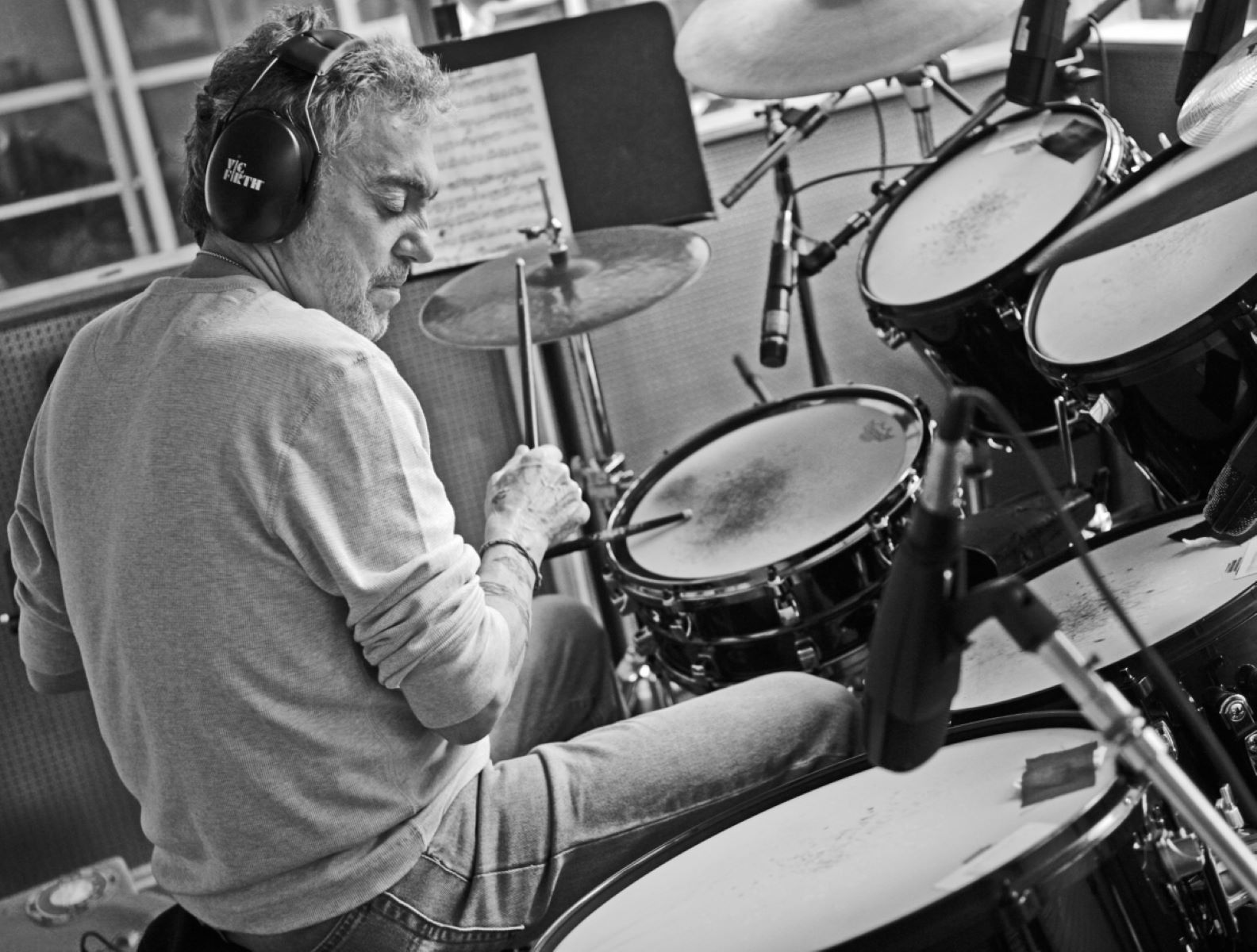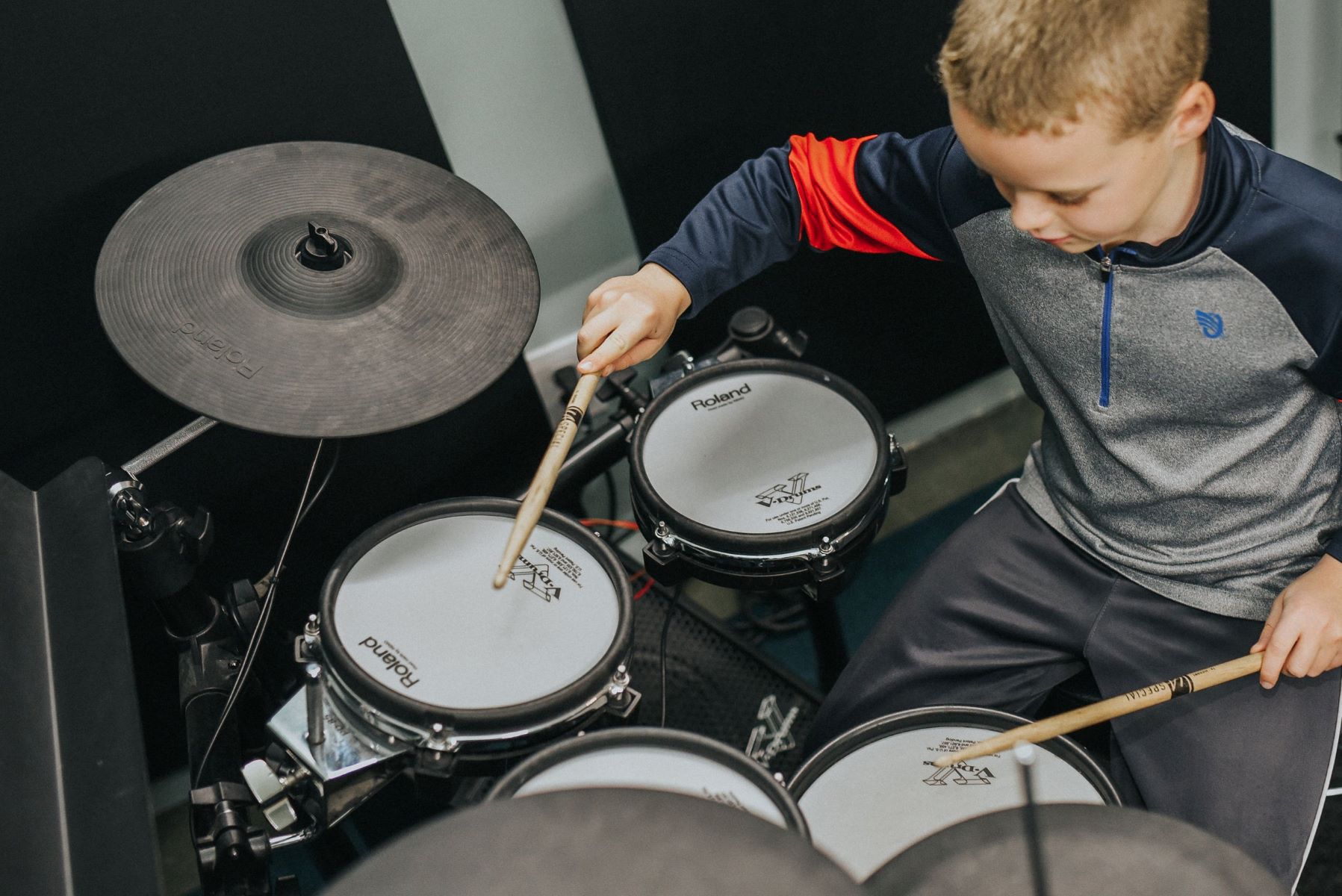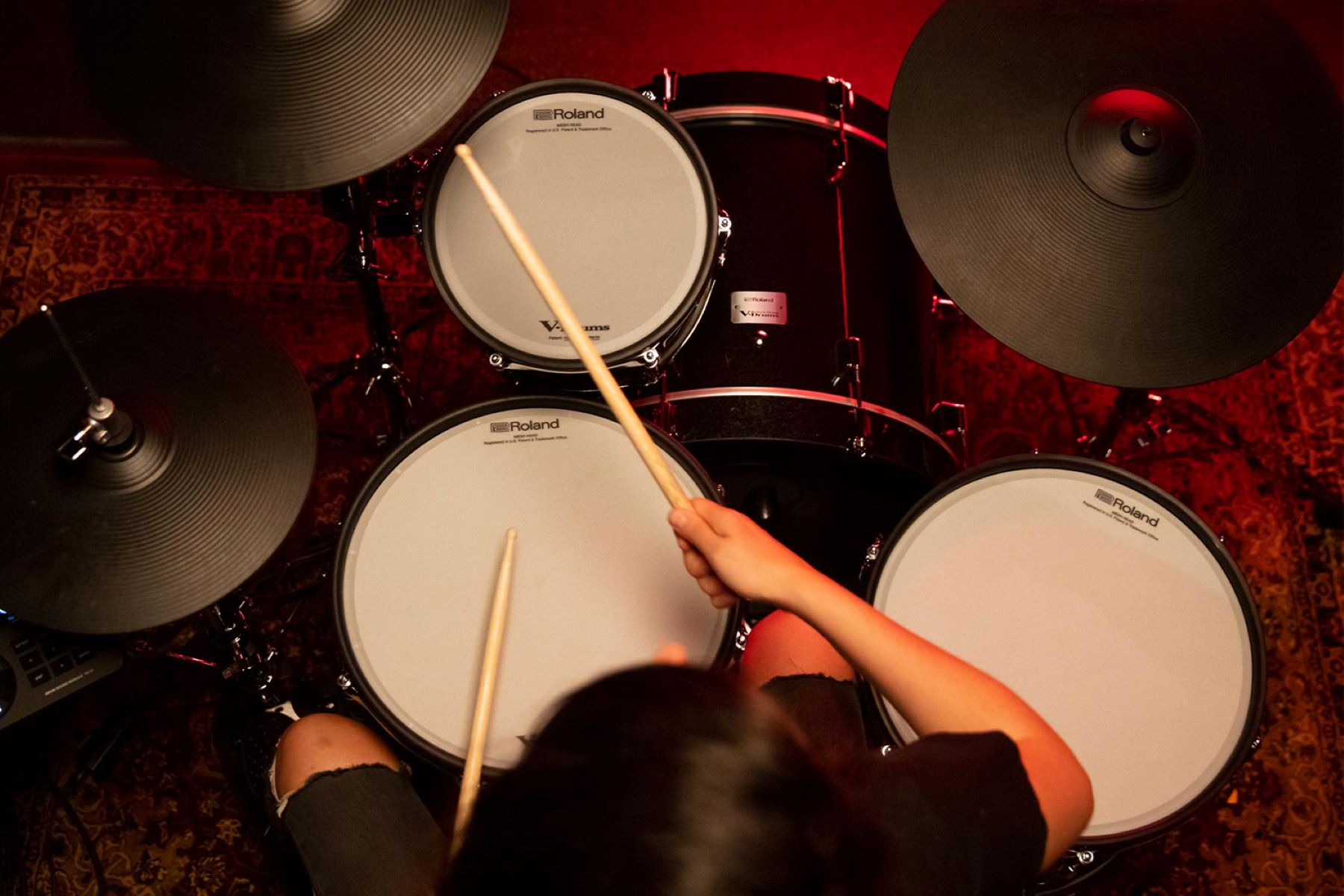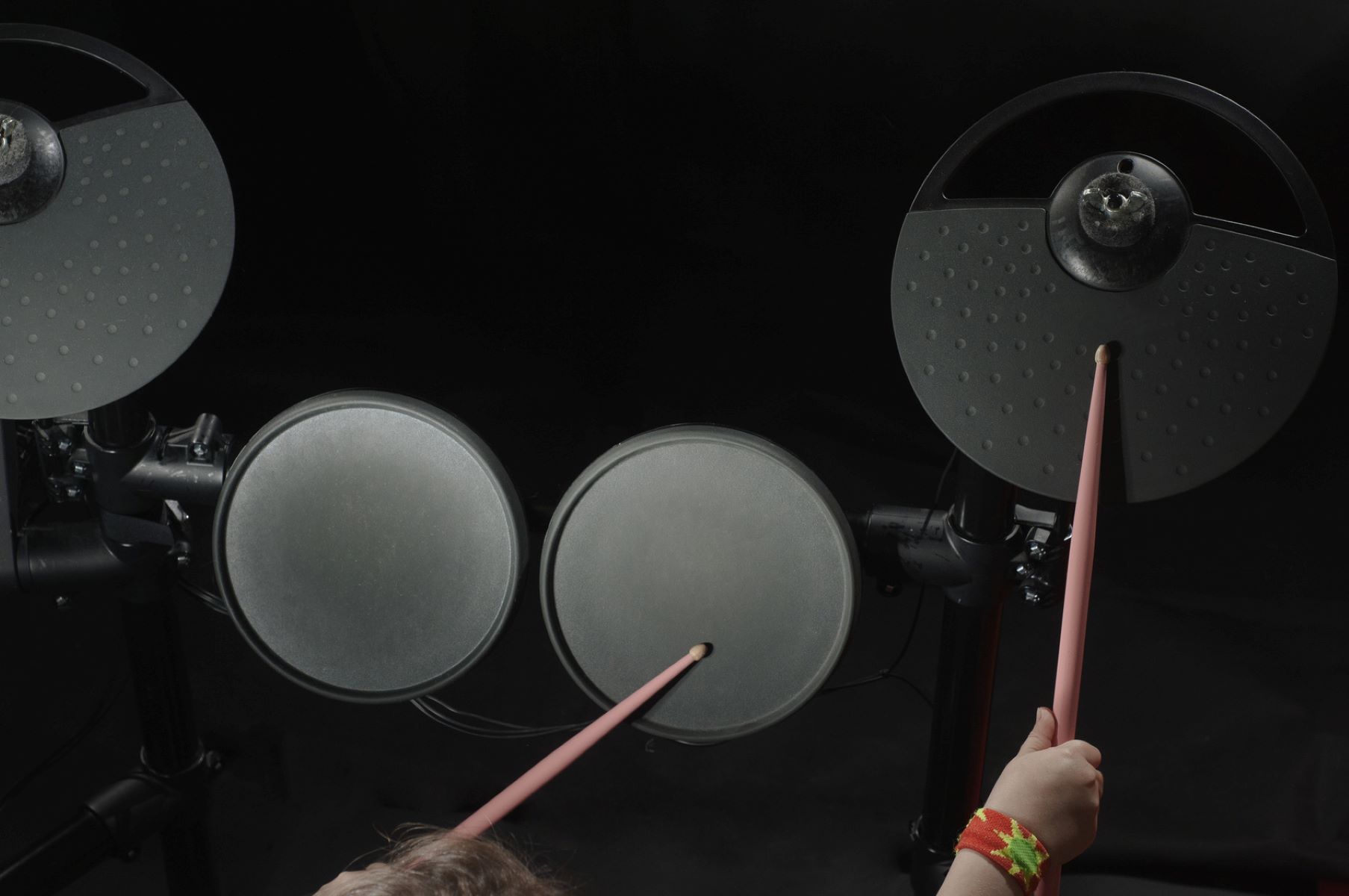Home>Instruments>Drums>How To Play Doubles On Drums


Drums
How To Play Doubles On Drums
Published: February 8, 2024
Learn how to play doubles on drums with our step-by-step guide. Improve your drumming skills and master the art of playing doubles. Start your drumming journey today!
(Many of the links in this article redirect to a specific reviewed product. Your purchase of these products through affiliate links helps to generate commission for AudioLover.com, at no extra cost. Learn more)
Table of Contents
Introduction
Playing doubles on drums is an essential skill for drummers of all levels. Doubles refer to playing two consecutive notes with the same hand, and mastering this technique can significantly enhance a drummer's speed, control, and overall musical expression. Whether you're a beginner looking to improve your foundational skills or an experienced drummer aiming to add flair and complexity to your playing, understanding and practicing doubles is crucial.
In this comprehensive guide, we'll delve into the art of playing doubles on drums, exploring the role of doubles in drumming, techniques for developing speed and control, and practical applications of doubles in drum beats and fills. By the end of this article, you'll have a solid grasp of how to integrate doubles into your drumming repertoire, elevating your performance and musical creativity.
Let's embark on a rhythmic journey to uncover the nuances of playing doubles on drums, from fundamental techniques to advanced applications. Whether you're drawn to the pulsating energy of rock, the intricate patterns of jazz, or the driving force of funk, mastering doubles will open up a world of rhythmic possibilities and elevate your drumming prowess. So, grab your sticks, find your rhythm, and let's explore the captivating realm of doubles on drums.
Understanding the Role of Doubles in Drumming
Before delving into the technical aspects of playing doubles on drums, it’s crucial to understand the fundamental role that doubles play in shaping a drummer’s style and technique. Doubles serve as building blocks for intricate rhythms, providing drummers with the ability to add depth, speed, and complexity to their playing.
At its core, mastering doubles enables drummers to execute rapid and seamless transitions between notes, creating a fluid and dynamic sound that enhances musical arrangements. Whether incorporated into grooves, fills, or solos, doubles inject a sense of agility and precision into drumming performances, allowing for expressive and nuanced rhythmic variations.
Furthermore, doubles are integral to achieving a balanced and controlled drumming technique. By honing the ability to play consecutive notes with precision and consistency, drummers develop the dexterity and coordination necessary to navigate intricate patterns and maintain steady tempos. This level of control empowers drummers to execute complex rhythms with confidence, elevating their overall musicality and stage presence.
Moreover, understanding the role of doubles in drumming opens doors to diverse musical genres and styles. From the frenetic energy of punk and metal to the syncopated grooves of funk and the polyrhythmic complexities of world music, doubles serve as a versatile tool for drummers to adapt to various musical contexts and express their rhythmic artistry.
As we unravel the multifaceted nature of doubles in drumming, it becomes evident that mastering this technique is not merely a matter of technical proficiency but a gateway to unlocking the full potential of rhythmic expression. With a solid grasp of the foundational role of doubles, drummers can embark on a journey towards refining their craft and infusing their playing with creativity and dynamism.
Developing Speed and Control
Developing speed and control is essential for mastering the art of playing doubles on drums. It requires a combination of focused practice, proper technique, and a deep understanding of rhythmic dynamics. By honing these skills, drummers can elevate their playing to new heights and unleash the full potential of doubles in their performances.
One of the fundamental aspects of developing speed and control is practicing rudiments. Rudiments are the foundational patterns that form the basis of drumming techniques, and they play a pivotal role in enhancing a drummer’s speed, precision, and overall proficiency. Specific rudiments such as the single stroke roll, double stroke roll, and paradiddle are particularly beneficial for building the dexterity and coordination necessary for executing doubles with finesse.
Furthermore, incorporating exercises that focus on hand and wrist strength can significantly contribute to developing speed and control. Utilizing practice pads, drumming surfaces, or electronic drum kits for dedicated practice sessions can help drummers build the muscle memory and stamina required to execute rapid and consistent doubles. Additionally, employing dynamic wrist and finger control techniques, such as finger control exercises and rebound strokes, can further enhance a drummer’s ability to execute doubles with fluidity and precision.
Another crucial aspect of developing speed and control is maintaining a relaxed yet focused approach to playing. Tension in the hands and arms can impede speed and hinder control, so drummers should strive to cultivate a relaxed grip and posture while practicing doubles. By maintaining a balanced and relaxed physical state, drummers can optimize their technique and minimize fatigue, thereby enabling them to execute doubles with greater speed and control.
Ultimately, developing speed and control in playing doubles on drums is a continuous journey that demands dedication, patience, and a willingness to embrace challenges. By integrating focused rudiment practice, strength-building exercises, and a mindful approach to playing, drummers can gradually enhance their speed, precision, and overall control, unlocking the full expressive potential of doubles in their drumming repertoire.
Incorporating Doubles into Drum Beats
Integrating doubles into drum beats adds a layer of complexity and dynamism to rhythmic patterns, enhancing the overall groove and feel of the music. Whether in a band setting or during solo practice sessions, mastering the art of incorporating doubles into drum beats opens up a myriad of creative possibilities for drummers.
One effective way to incorporate doubles into drum beats is by utilizing them within the framework of common time signatures, such as 4/4 or 6/8. By seamlessly integrating doubles into the hi-hat, snare, or bass drum patterns, drummers can infuse their beats with intricate and syncopated rhythms, adding depth and texture to the overall groove.
Moreover, experimenting with ghost notes and accentuating doubles within drum beats can impart a sense of nuance and flair to the rhythmic structure. Ghost notes, played at a softer volume, can create subtle rhythmic embellishments, while strategically placed accented doubles can punctuate the beat with added emphasis and energy, elevating the musical dynamics.
Furthermore, exploring the incorporation of doubles within drum fills and transitions between sections of a song can enhance the overall flow and continuity of the music. By skillfully weaving doubles into drum fills, drummers can create seamless transitions between verses, choruses, and bridges, maintaining a cohesive rhythmic foundation throughout the song.
Additionally, embracing experimentation and improvisation is key to unlocking the creative potential of incorporating doubles into drum beats. Drummers can explore unconventional rhythmic patterns, polyrhythms, and metric modulations, leveraging doubles to inject a sense of unpredictability and innovation into their beats, thereby captivating listeners with engaging and dynamic drumming performances.
Ultimately, incorporating doubles into drum beats is a testament to a drummer’s creativity and rhythmic ingenuity. By integrating doubles in inventive and expressive ways, drummers can elevate the musical landscape, infusing their beats with depth, complexity, and a distinct rhythmic identity that resonates with audiences and fellow musicians alike.
Using Doubles in Drum Fills
Drum fills serve as impactful moments within a musical piece, providing drummers with the opportunity to showcase their technical prowess and add dramatic flair to the music. When strategically incorporating doubles into drum fills, drummers can elevate the intensity and complexity of their fills, leaving a lasting impression on listeners and fellow musicians.
One effective way to utilize doubles in drum fills is by integrating them across different elements of the drum kit, including the snare, toms, and bass drum. By incorporating rapid and precise doubles within these components, drummers can create cascading and dynamic fill patterns that build anticipation and add a sense of rhythmic intricacy to the music.
Moreover, experimenting with paradiddles, a rudimentary pattern that incorporates alternating singles and doubles, can yield compelling and diverse fill variations. Incorporating paradiddles into drum fills allows drummers to seamlessly transition between single and double strokes, resulting in fluid and captivating rhythmic phrases that enhance the overall impact of the fill.
Furthermore, incorporating dynamic accents and varying the velocity of doubles within drum fills can impart a sense of drama and intensity. By strategically accentuating doubles and modulating their volume, drummers can create compelling rhythmic dynamics within their fills, commanding attention and adding a layer of excitement to the musical arrangement.
Additionally, embracing creativity and experimentation is paramount when using doubles in drum fills. Drummers can explore unconventional rhythmic patterns, syncopated accents, and polyrhythmic motifs, leveraging doubles to inject a sense of unpredictability and innovation into their fills, thereby captivating listeners with engaging and dynamic drumming performances.
Ultimately, using doubles in drum fills is a testament to a drummer’s artistry and rhythmic virtuosity. By skillfully integrating doubles into fills with creativity and precision, drummers can leave an indelible mark on the musical landscape, infusing their performances with excitement, complexity, and a distinct rhythmic identity that resonates with audiences and fellow musicians alike.
Conclusion
Embarking on the journey of mastering doubles on drums unveils a world of rhythmic possibilities and artistic expression. From understanding the foundational role of doubles in shaping drumming techniques to developing speed, control, and creativity, the art of incorporating doubles into drumming repertoire enriches the musical landscape and elevates the drummer’s craft.
By delving into the multifaceted nature of doubles, drummers gain insight into the intricate dynamics that underpin rhythmic expression. Doubles serve as the catalyst for infusing drum beats and fills with depth, complexity, and nuance, creating a rhythmic tapestry that captivates audiences and fellow musicians alike.
Moreover, the journey of mastering doubles extends beyond technical proficiency, embracing creativity, innovation, and a relentless pursuit of rhythmic excellence. Whether in the pulsating energy of rock, the intricate patterns of jazz, or the driving force of funk, doubles serve as the rhythmic cornerstone that empowers drummers to navigate diverse musical genres and styles with finesse and artistry.
As drummers continue to refine their skill in incorporating doubles into their playing, they embark on a rhythmic odyssey that transcends mere technicality, resonating with the soulful essence of music. The seamless integration of doubles within drum beats and fills becomes a testament to a drummer’s rhythmic ingenuity and expressive depth, leaving an indelible mark on the musical canvas.
In conclusion, the art of playing doubles on drums is a testament to the drummer’s dedication, creativity, and unwavering passion for rhythmic exploration. By mastering the nuances of doubles, drummers unlock the boundless potential of rhythmic expression, shaping their musical identity and leaving an enduring legacy in the world of drumming.











